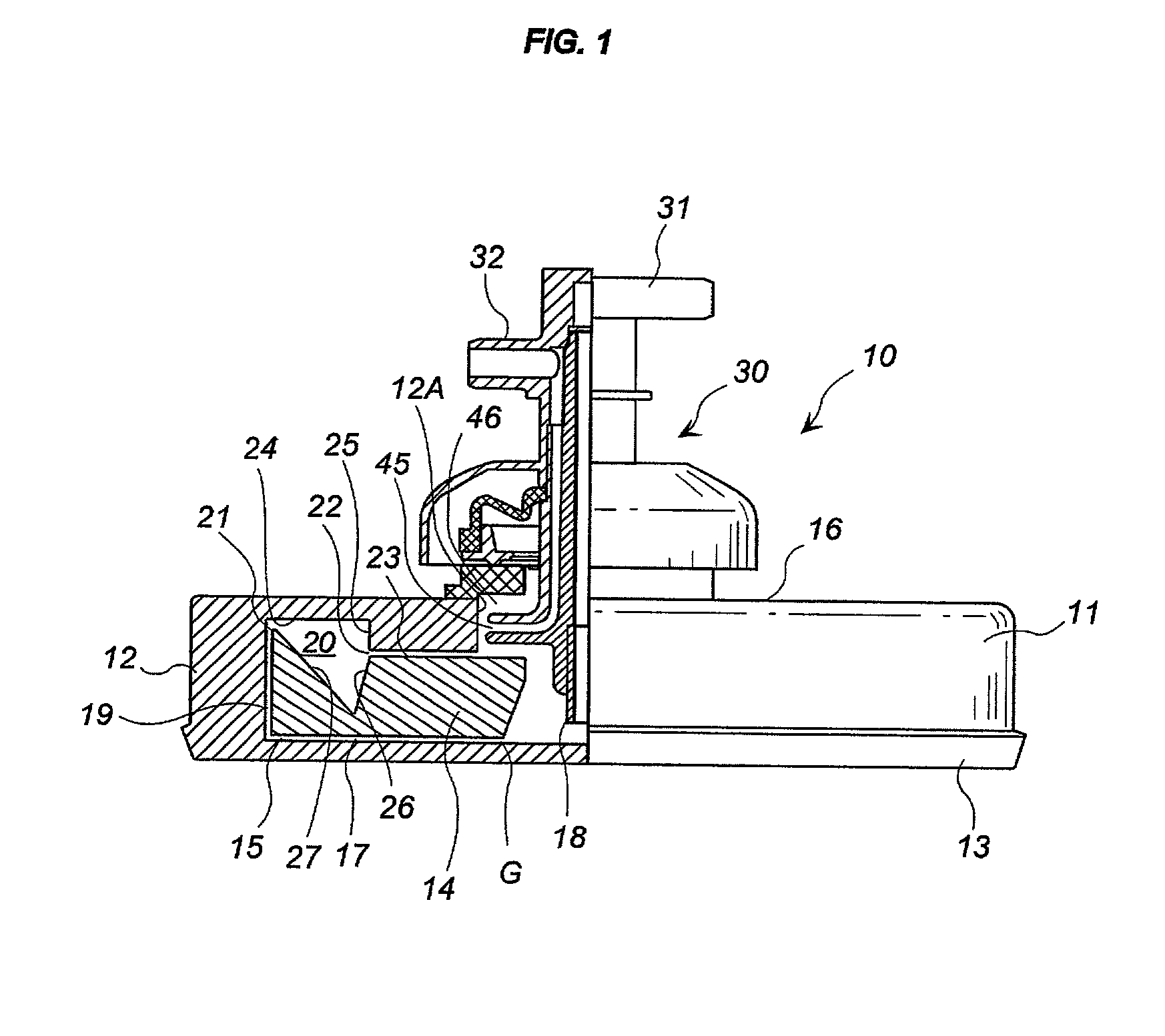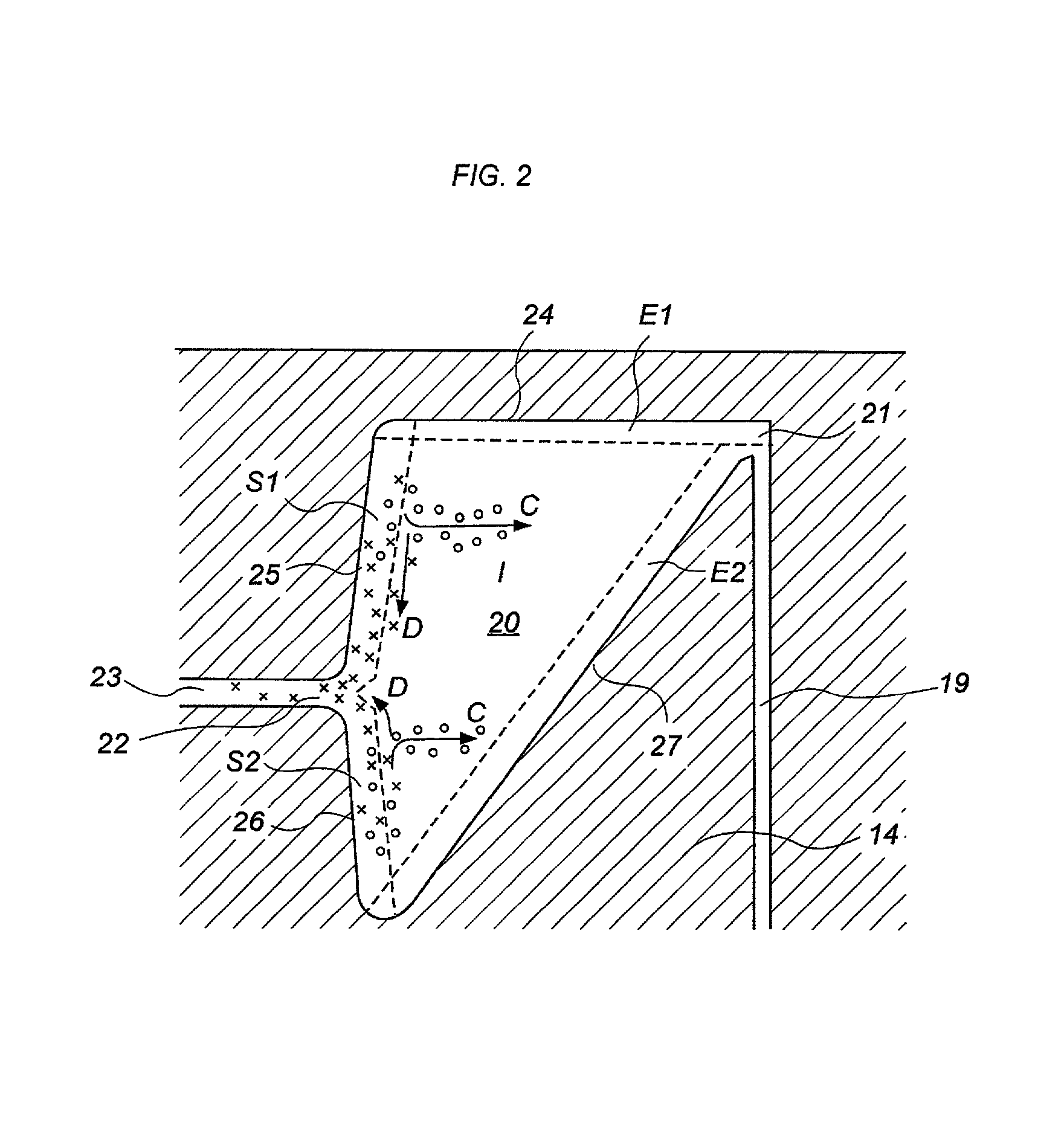Centrifuge bowl for separating particles
a centrifuge and particle technology, applied in centrifuges, suction devices, material testing goods, etc., can solve the problems of serious medial complications, short half-life of platelets, and limited number of donors, so as to reduce the flow velocity of the prp fraction, slow sedimentation velocity, and fast sedimentation velocity
- Summary
- Abstract
- Description
- Claims
- Application Information
AI Technical Summary
Benefits of technology
Problems solved by technology
Method used
Image
Examples
example 1
[0064] A single cavity centrifuge bowl having the construction shown in FIG. 1 was prepared. The outer diameter of the inner cavity 20 was about 50 mm and the inner diameter was about 33 mm. The maximum height of the cavity 20 was about 20 mm and the axial offset between the inlet and outlet peripheral slots 21 and 22 was about 10 mm. The volume of the cavity 20 was approximately 35 ml. The upper annular wall 24 was generally horizontal but the inclined wall 27 contained about 37 degrees with the axis of rotation.
[0065] The centrifuge bowl was mounted on a centrifuge machine for rotation, with the rotary seal assembly 30 fixedly supported. The bowl was initially filled with saline solution pumped at a predetermined flow rate and the bowl was started to rotate at a predetermined speed. After two minutes of feeding the saline, valves were operated to change the flow from saline to a fractionated whole blood containing platelets and white blood cells suspended in plasma. After switchin...
PUM
 Login to View More
Login to View More Abstract
Description
Claims
Application Information
 Login to View More
Login to View More - R&D
- Intellectual Property
- Life Sciences
- Materials
- Tech Scout
- Unparalleled Data Quality
- Higher Quality Content
- 60% Fewer Hallucinations
Browse by: Latest US Patents, China's latest patents, Technical Efficacy Thesaurus, Application Domain, Technology Topic, Popular Technical Reports.
© 2025 PatSnap. All rights reserved.Legal|Privacy policy|Modern Slavery Act Transparency Statement|Sitemap|About US| Contact US: help@patsnap.com



